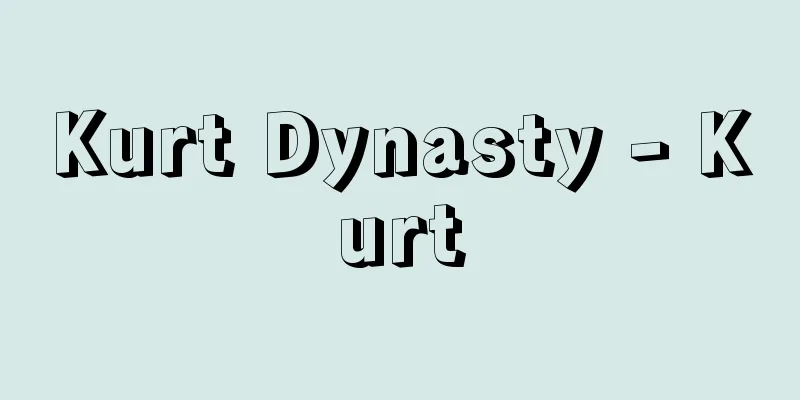Prime Minister's Office - Sorifu

|
Based on the National Administrative Organization Act, the Prime Minister's Office was established as a national administrative agency headed by the Prime Minister's Office Establishment Act (Act No. 127 of 1949). The Prime Minister's Office was established in 1947 (Showa 22), and became the Prime Minister's Office in 1949. In January 2001 (Heisei 13), due to the reorganization of central government ministries and agencies, it was integrated into the Cabinet Office along with the Economic Planning Agency and the Okinawa Development Agency. The duties of the Prime Minister's Office were to comprehensively carry out administrative affairs related to honors, overall coordination of the policies and affairs of each administrative agency, and administrative affairs that did not fall under the jurisdiction of other administrative agencies, as well as administrative affairs that were placed under the jurisdiction of the Prime Minister's Office by treaties and laws (including orders based on laws). The duties of the Prime Minister's Office were to: liaise between administrative agencies, prepare a draft basic plan for policies for persons with disabilities in accordance with the provisions of the Basic Act for Persons with Disabilities, public relations, surveys of public opinion, prepare a draft basic plan for gender equality as provided for in Article 13, paragraph 1 of the Basic Act for a Gender-Equal Society (Act No. 78 of 1999), in accordance with the provisions of Article 13, paragraph 3 of the same Act, enforce the Act on the Special Fund for Peace Memorial Projects, enforce the Special Measures Act for the Preservation of Historic Environment in Ancient Capitals and the Special Measures Act for the Preservation of Historic Environment in Asuka Village and Improvement of Living Environment, enforce the Act on the Protection and Management of Animals, enforce the Public Archives Act, enforce the National Archives of Japan Act (Act No. 79 of 1999), survey, research, and planning related to the honors system, orders and medals, commendations, medals and other prizes, etc. In addition to these, there were also matters that did not fall under the jurisdiction of other administrative agencies, and matters that were placed under the jurisdiction of the Prime Minister's Office by treaty or law (including orders based on law). In order to carry out these duties, the Prime Minister's Office, in accordance with the law (including orders based on the law), had the authority to direct and supervise the editing and printing of the Official Gazette and the Complete Collection of Laws and Regulations, as well as the printing of confidential documents under the jurisdiction of the Cabinet, as well as the authority to hand down honors and to review the awarding and revoking of honors. The internal bureaus included the Minister's Secretariat and the Awards Bureau. Councils included the Port and Harbor Coordination Council, the Local Government System Research Council, and the Social Security System Council, while special institutions included the Science Council of Japan and the Central Disaster Prevention Council, and facilities included the National Archives of Japan, the State Guest House, the Central Council for Countermeasures for Displaced Persons Affiliated with the U.S. Occupied Forces, the Pollution Control Council, the Consumer Protection Council, the Central Traffic Safety Council, and the Hanshin-Awaji Reconstruction Headquarters. The external bureaus of the Prime Minister's Office were the Fair Trade Commission, the National Public Safety Commission, the Pollution Adjustment Commission, the Financial Reconstruction Commission, the Imperial Household Agency, the Hokkaido Regional Development Agency, the Defense Agency, the Economic Planning Agency, the Science and Technology Agency, the Environment Agency, the Okinawa Development Agency, the National Land Agency, and the Management and Coordination Agency, which was established in 1984 and took over many of the duties of the Prime Minister's Office. In the central government reorganization in January 2001, the Fair Trade Commission and the Pollution Adjustment Commission became external bureaus of the Ministry of Internal Affairs and Communications, the Hokkaido Regional Development Agency became the Ministry of Land, Infrastructure, Transport and Tourism together with the Ministry of Transport, the Science and Technology Agency was merged with the Ministry of Education to become the Ministry of Education, Culture, Sports, Science and Technology, and the Environment Agency became the Ministry of the Environment, but the rest of the duties were taken over by the Cabinet Office (the Financial Reconstruction Commission was merged with the Financial Services Agency, an external bureau of the Cabinet Office). Then, in January 2007, the Defense Agency became the Ministry of Defense and was removed from the Cabinet Office. [Kazukazu Hirata] [Reference items] | |Source: Shogakukan Encyclopedia Nipponica About Encyclopedia Nipponica Information | Legend |
|
国家行政組織法に基づき、総理府設置法(昭和24年法律第127号)により内閣総理大臣を長として設置された国の行政機関。1947年(昭和22)総理庁が設置され、49年総理府となった。2001年(平成13)1月の中央省庁再編により、経済企画庁、沖縄開発庁などとともに内閣府に統合された。 総理府の任務は、栄典に関する事務、各行政機関の施策および事務の総合調整、他の行政機関の所掌に属しない行政事務ならびに条約および法律(法律に基づく命令を含む)で総理府の所掌に属させられた行政事務を一体的に遂行することであった。 総理府の所掌事務は、各行政機関の事務の連絡に関すること、障害者基本法の規定に基づき、障害者のための施策に関する基本的な計画の案を作成すること、広報に関すること、世論の調査に関すること、男女共同参画社会基本法(平成11年法律第78号)第13条第3項の規定に基づき、同条第1項に規定する男女共同参画基本計画の案を作成すること、平和祈念事業特別基金等に関する法律の施行に関すること、古都における歴史的風土の保存に関する特別措置法および明日香(あすか)村における歴史的風土の保存および生活環境の整備等に関する特別措置法の施行に関すること、動物の保護および管理に関する法律の施行に関すること、公文書館法の施行に関すること、国立公文書館法(平成11年法律第79号)の施行に関すること、栄典制度に関し調査し、研究し、および企画すること、勲位および勲章に関すること、褒章に関すること、記章その他の賞件に関すること、等であった。また、これらのほか、他の行政機関の所掌に属しない事務および条約または法律(法律に基づく命令を含む)で総理府の所掌に属させられた事務であった。 総理府は、これら所掌事務を遂行するため、法律(法律に基づく命令を含む)に従い、官報および法令全書の編集および印刷ならびに内閣所管の機密文書の印刷についての指揮監督、栄典の伝達、栄典の授与および剥奪(はくだつ)に関する審査等の権限を有していた。 内部部局として、大臣官房および賞勲局が置かれていた。審議会として港湾調整審議会、地方制度調査会、社会保障制度審議会等が、特別の機関として、日本学術会議、中央防災会議等、施設等機関として、国立公文書館および迎賓館、中央駐留軍関係離職者等対策協議会、公害対策会議、消費者保護会議、中央交通安全対策会議、阪神・淡路復興対策本部等が置かれていた。 また、総理府の外局としては、公正取引委員会、国家公安委員会、公害等調整委員会、金融再生委員会、宮内庁、北海道開発庁、防衛庁、経済企画庁、科学技術庁、環境庁、沖縄開発庁、国土庁、そして1984年に新設され、従来の総理府本府の事務の多くをその事務とするところとなった総務庁が置かれていた。2001年1月の中央省庁再編では、公正取引委員会、公害等調整委員会は総務省の外局に、北海道開発庁は運輸省などとともに国土交通省となり、科学技術庁は文部省と統合して文部科学省に、環境庁は環境省になったが、これらを除く事務は内閣府に引き継がれた(金融再生委員会は内閣府外局の金融庁に統合)。その後、2007年1月、防衛庁が防衛省となって内閣府から外れた。 [平田和一] [参照項目] | |出典 小学館 日本大百科全書(ニッポニカ)日本大百科全書(ニッポニカ)について 情報 | 凡例 |
<<: Paramecium (Japanese sandal worm) - Paramecium caudatum
>>: Phase rule - Soritsu (English spelling)
Recommend
Ararix - Ararix
…reigned 395-410. His Latin name was Alaricus. Du...
Murex troscheli (Murex troscheli)
Also known as the Muricidae (illustration), this i...
Fada
…a hilly region in northeastern Chad, northern Af...
Propallene longiceps (English spelling)
...adults are generally free-living, but many spe...
Public Services - Public Services
A general term for services provided by national a...
Camphor - Camphor (English spelling)
Camphor is also called camphor. Camphor, obtained...
Oda clan
This clan originated as a shokan (manor) of Oda M...
Rock moss - Rock moss
A large, beautiful species of the family Musciacea...
Kale - Kale (English spelling)
A perennial plant of the Brassicaceae family (APG...
Tapirus terrestris (English spelling)
...A general term for four species of mammals bel...
Semargl
… [Origin of the Gods] The Primary Chronicle (als...
Salticidae
…A general term for spiders in the family Saltici...
Junpuu bizoku - Junpuu bizoku
Jun is related to jun and pure, and means honest t...
NFL - National Football League
A professional American football league in the Uni...
Writing - Writing
〘noun〙① To write in. To add to something. Also, ch...









